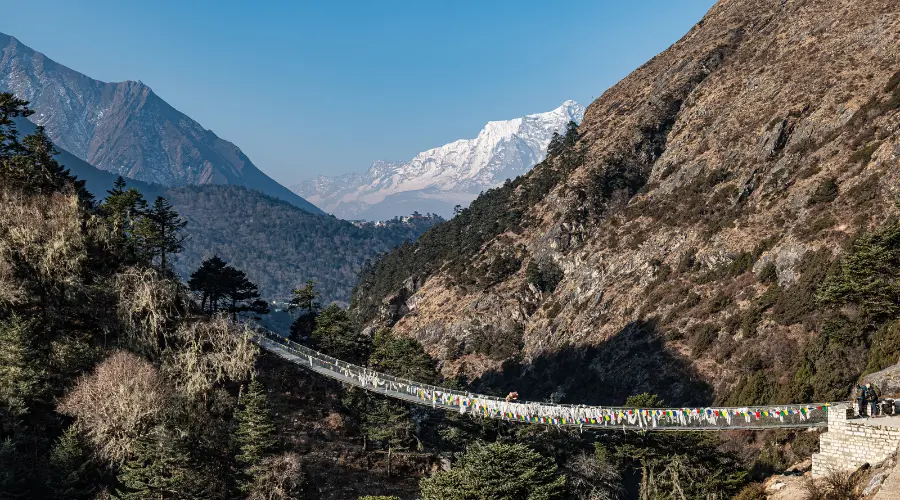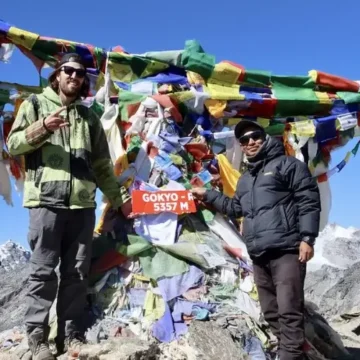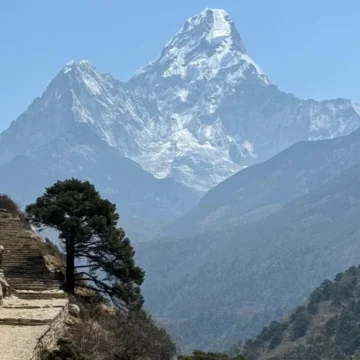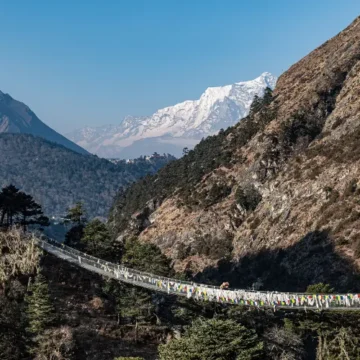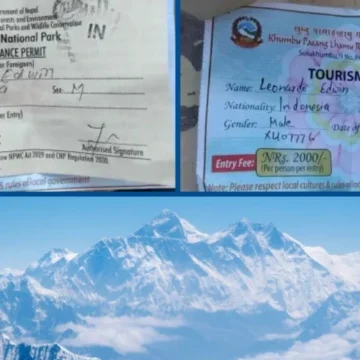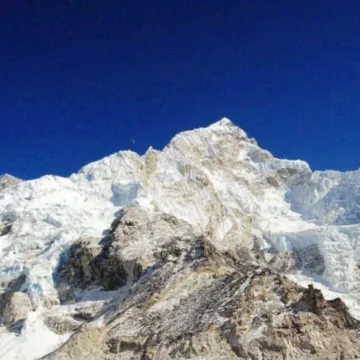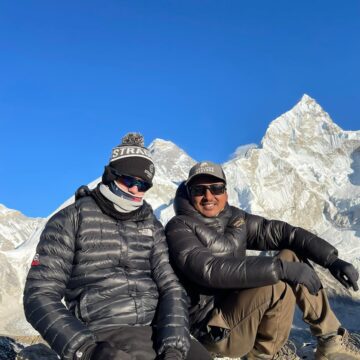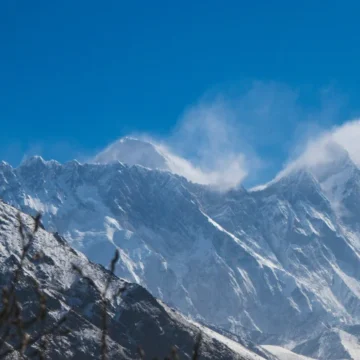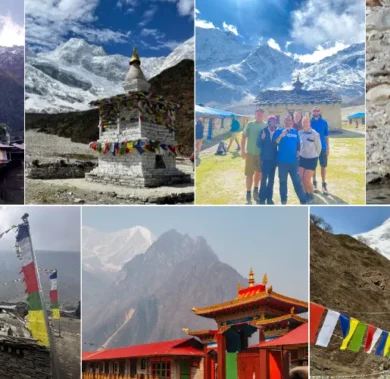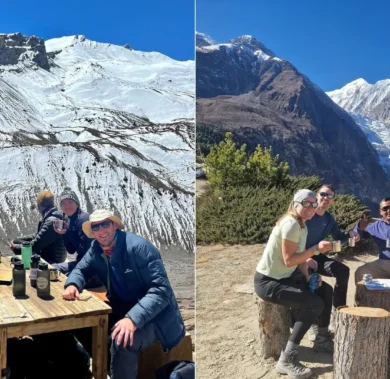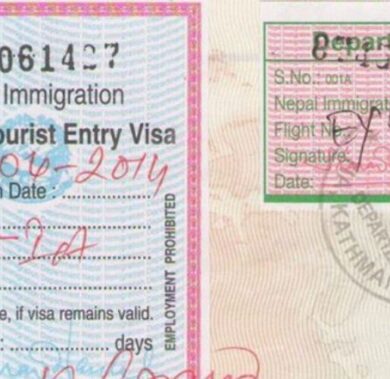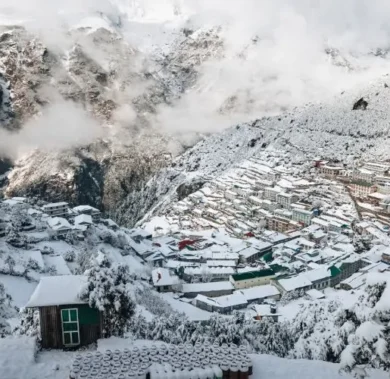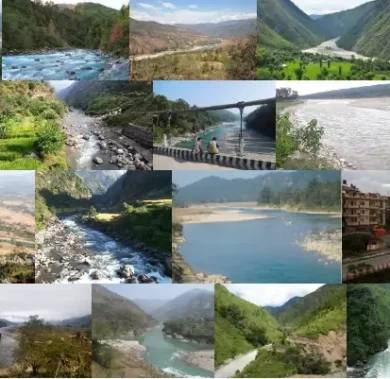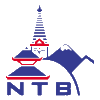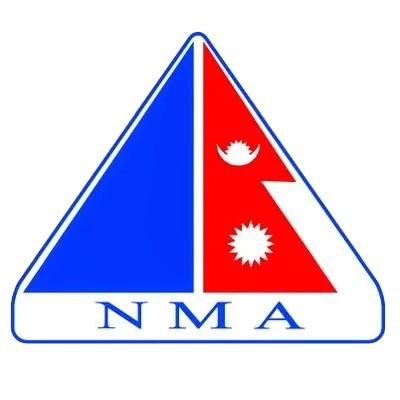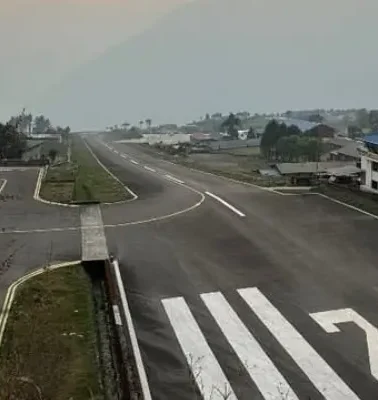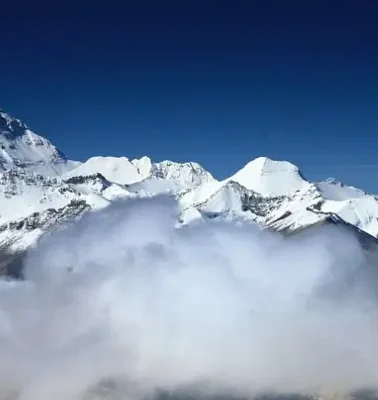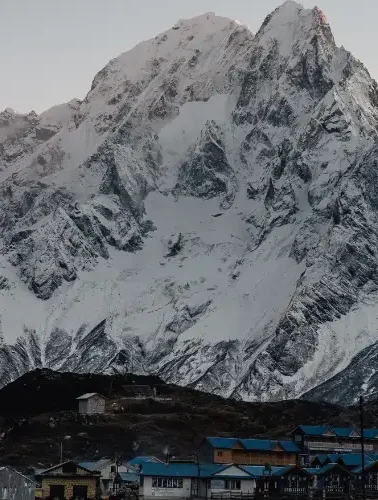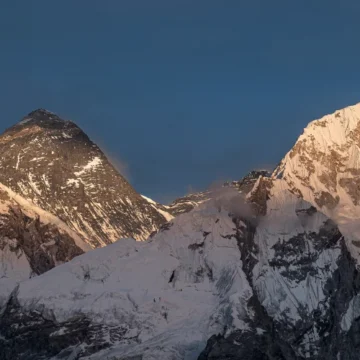
Best Time to Hike Everest Base Camp | Monthly Guide
Table of Contents
Everest Base Camp (EBC) is a trekkers’ dream destination worldwide. However, choosing the best time to hike Everest Base Camp is crucial for an unforgettable and successful trekking experience. The weather in the Everest region varies dramatically by season and elevation, affecting trail conditions, visibility, and trekking difficulty.
While spring (March to May) and autumn (September to November) are considered the best trekking season, each month offers a unique experience.
Here’s a detailed month-by-month breakdown to help you decide the perfect time for your Everest Base Camp Trek adventure.
Spring (March to May) – One of the Best Seasons
The first peak trekking season of the year, spring, is one of the most popular trekking seasons at Everest Base Camp. Trekkers are offered with clear skies, blooming rhododendron forests, and stable weather conditions.
This is also prime season for Everest summits. Due to this, the trails and teahouses will be busy with climbers and trekkers.
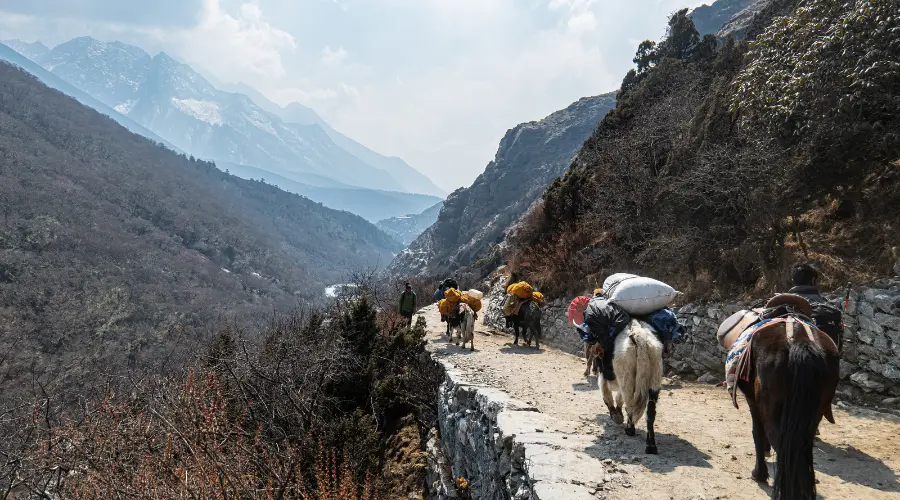
March: Beginning of the Trekking Season
As winter fades, March marks the beginning of the trekking season. Trails begin to clear up, and temperatures are also suitable for trekking, with gradually increasing temperatures.
| Best For | Challenges |
|
|
April: Peak Season Begins
It is one of the busiest months on the EBC trail. The weather is near perfect, and climbers start preparing for their Everest summit attempts. Also, the forests are in full bloom after the long winter hibernation.
| Best For | Challenges |
|
|
May: Warmer Days, Everest Climbing Season
It is the warmest month of the spring season, so trekking in May is a great time. It is also the peak of the Everest climbing season. During this month, base camp turns into a bustling tent city for climbers.
| Best For | Challenges |
|
|
Monsoon (June to August) – Least Recommended
The monsoon season is featured with heavy monsoon rainfall, making trekking to Everest Base Camp difficult. The trails can be muddy, and cloud cover often obstructs mountain views.
Additionally, there are risks of landslides and floods, making river/bridge crossings dangerous. This season is not the best time to hike Everest Base Camp for most trekkers.
June: Beginning of the Monsoon
The trekking conditions become challenging due to increased monsoon rainfall. Further, due to cloudy weather, the atmosphere becomes humid, increasing difficulty in breathing. Still, for some of the adventurers, with careful and well-managed planning, this month could be the best time to hike Everest Base Camp and see rich flora and fauna.
| Best For | Challenges |
|
|
July: Peak Monsoon Season
This season receives the heaviest rainfall, making it one of the least preferred months for trekking. Landslides are the most concerning risk during this month, often blocking the trekking route.
Even though the mountains may not be visible most of the time, trekkers who embrace the challenge can still enjoy the cultural aspect of the journey, interacting more with locals.
| Best For | Challenges |
|
|
August: Rainy but Ending Soon
Rainfall begins to become thin by the end of August, making way for better trekking conditions. Trekkers who come at this time may be rewarded with glimpses of the mountains as the skies are clear.
| Best For | Challenges |
|
|
Autumn (September to November) – Another Best Season
After spring, autumn is another peak season for trekking to EBC. The monsoon rains clear the air, leaving breathtakingly clear mountain views. Furthermore, the temperatures are mild, which is the perfect condition for trekking.
Trekkers are blessed with clear skies, stable weather, and a festive environment. Some of the major festivals of Nepal, like Dashain and Tihar, fall in this season. So, if you are looking to be a part of these festivals, then trekking in autumn could be the best time to hike Everest Base Camp for you.
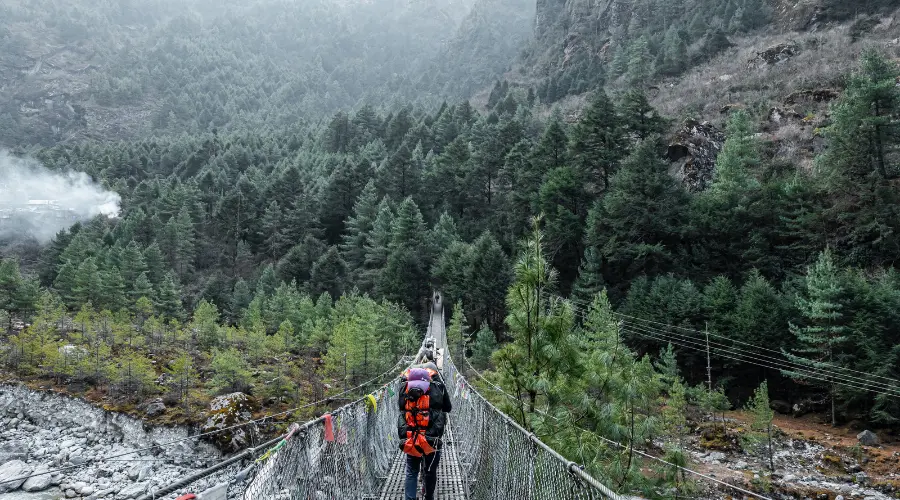
September: Monsoon Ends, Trekking Starts Again
As the monsoon comes to an end, the trails begin to dry up, and trekking conditions improve significantly. The weather stabilizes, making September an ideal time for those who prefer fewer crowds.
| Best For | Challenges |
|
|
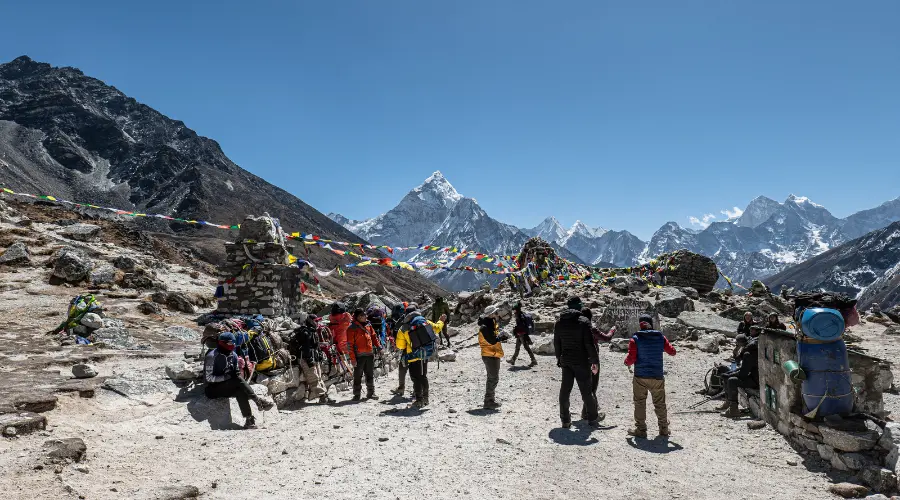
October: The Best Month for EBC Trek
This is the best month for EBC Trek of the autumn season. October presents itself with stable weather and excellent visibility, far and wide.
The environment in itself is calming, offering an ideal condition if you are looking for a yoga trek in Nepal.
| Best For | Challenges |
|
|
November: Crisp Views, Cooler Weather
End of the autumn, November brings colder temperatures yet stunning clear skies and panoramic views of the Himalayas.
For those who prefer solitude, with fewer trekkers on the trail but do not mind trekking in a bit colder climate, trekking in November could be the best time to hike Everest Base Camp.
| Best For | Challenges |
|
|
Winter (December to February) – Cold & Challenging
For those seeking adventure and solitude, winter trekking can be thought about. It is the coldest and the most challenging time to trek to EBC.
Trekkers can expect extremely cold temperatures, especially at higher altitudes, but fewer trekkers.
Although it is not the best time for trekking, it offers one of the most beautiful views of glittering, snow-capped mountain views. Additionally, trekkers are offered unique experiences and adventures.
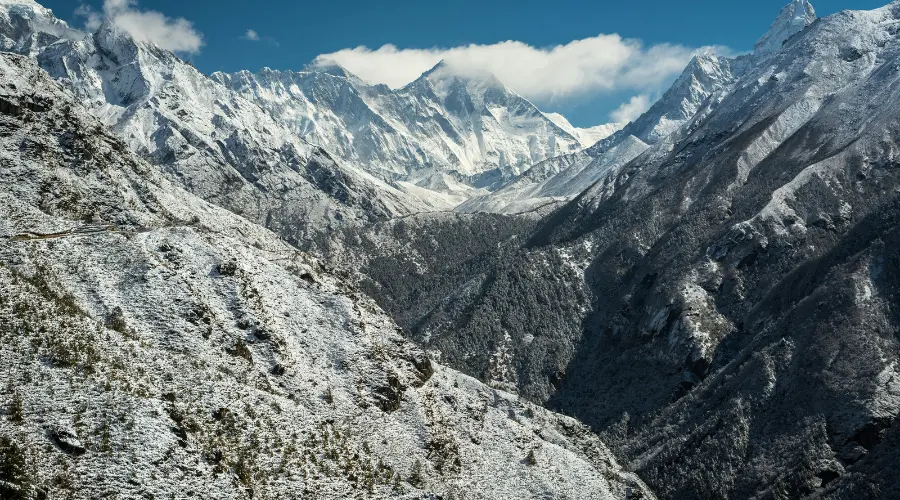
December: Cold but Doable
If we are to skip cold temperatures, trekking in December offers great visibility. Moreover, if you love snow or like to play in the snow, then you should consider trekking this season.
| Best For | Challenges |
|
|
January: Harshest Winter Month
It is the coldest and harshest month in winter. January comes with harsh and unpredictable weather conditions and climate change within a few hours.
Services in the teahouses and the trail are also limited. We only suggest experienced trekkers trekking to EBC during this month.
| Best For | Challenges |
|
|
February: Cold but Weather Improves
By February, the EBC weather improves, and the number of trekkers slowly increases. The days are slightly warmer, and the views are clearer. After a chilly, quiet, and frosty meadows and forests, the Everest region starts to come to life again.
The temperature is also favourable, making trekking more manageable.
| Best For | Challenges |
|
|
Additional Tips for Trekking to Everest Base Camp
Acclimatization: The EBC trek reaches up to a significant elevation of 5550 meters (18,209 ft) at Kala Patthar. So, it is a must to take time to acclimatize to avoid any risk of altitude sickness. You can spend extra days in Namche Bazaar and/or Dingboche to acclimate.
Smart Packing for EBC: Everest region can present itself with blizzard weather conditions, especially at higher altitudes. Therefore, it is suggested you pack according to the season and number of days you are trekking.
Permits: Ensure that you have all the required permits for EBC Trek.
Hydration and Nutrition: Stay hydrated and drink at least 3 litres of water daily. Likewise, eating high-energy foods which are easily digestible is advised to maintain stamina.
Travel Insurance: Accidents can happen anytime, anywhere, especially during high-altitude treks. So, we suggest that you have travel insurance that covers helicopter evacuation and medical bills.
Local Culture: Respect local customs and traditions. Learn a few basic Nepali phrases to connect with the Sherpa community.
Challenges of EBC Trek in Spring
Besides ideal trekking conditions during spring, it comes with its own kind of challenges.
Some of the challenges are discussed below:
- There can be high traffic and crowded trails, so you might feel congested.
- Teahouses might not be readily available, so book Everest accommodation in advance. Or you can trek with us so that you do not need to worry about any arrangements.
- Due to the high volume of trekkers, the Kathmandu to Lukla flight might be delayed or cancelled, or you might need to drive up to Ramechhap Airport early in the morning and then catch a flight.
- Although the days are warmer, nights can be freezing, so pack accordingly.
- Ascend slowly and stay hydrated to avoid Acute Mountain Sickness (AMS).
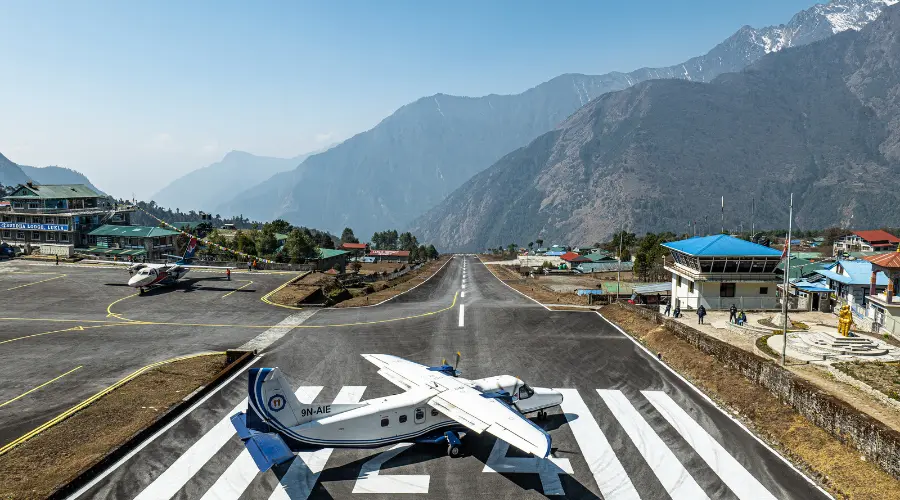
Final Thoughts
The best time to hike Everest Base Camp varies according to your priorities. Spring and autumn have the most favourable trekking weather, but the trail is crowded and expensive compared to other off-seasons. Winter and monsoon treks allow for solitude but present certain challenges of their own.
Select the season that best aligns with your level of experience, cold or rain tolerance, and crowd preference.
Proper trek planning will ensure a comfortable and memorable Everest Base Camp trip. For a trouble-free experience, book with Himalayan Masters, a well-known name for Everest treks and many other treks in the Himalayas. Our seasoned guides and well-planned itineraries ensure a successful and safe journey to the roof of the world.
You can contact Himalayan Masters through email ([email protected]) or WhatsApp (+977-9823636377).
Want to know more?
Speak to an Expert





Sandip Dhungana
Nepal 🇳🇵
Whatsapp: +977-9823636377

